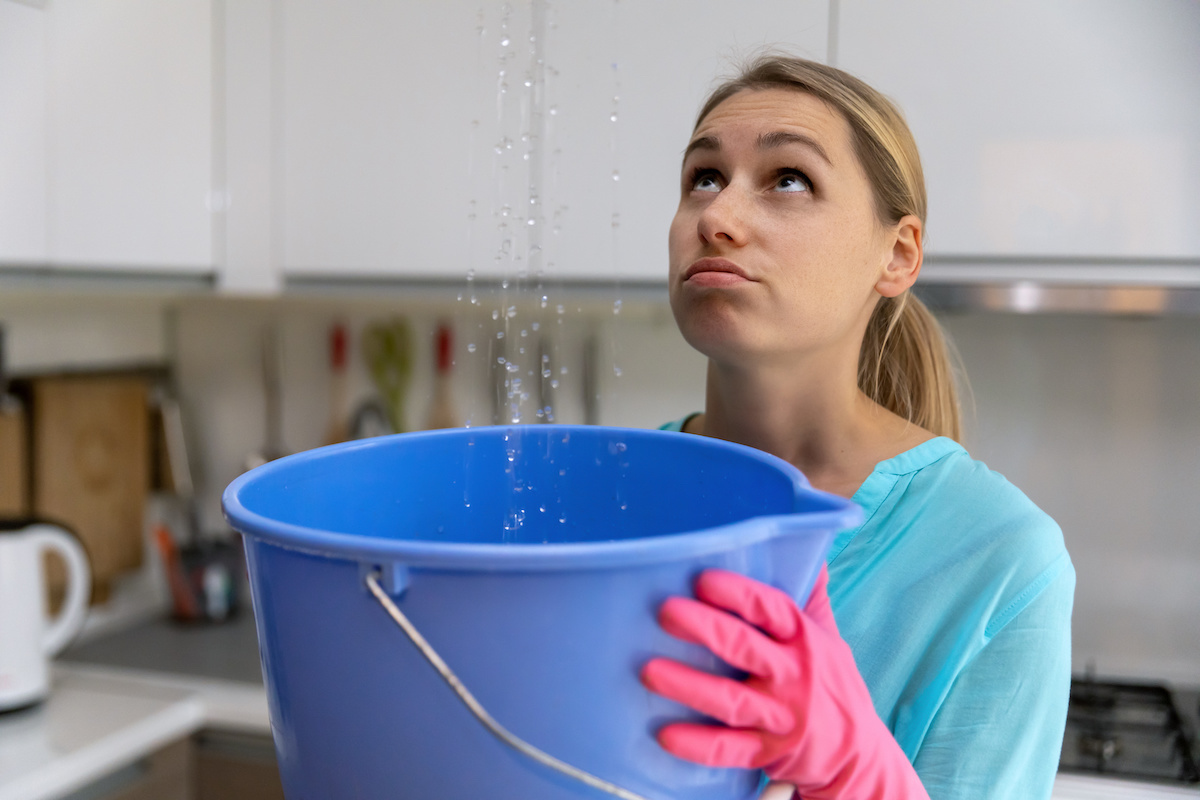Learn About Main Origins Contributing To Water Leakage in Your Home
Learn About Main Origins Contributing To Water Leakage in Your Home
Blog Article
The article following next involving How to detect water leaks in your home is exceedingly stimulating. You should keep reading.

Leaks not only cause waste of water but can also create unneeded damages to your home and advertise unwanted organic growth. By looking and understanding for day-to-day situations that create leaks, you can protect your residence from future leakages and unnecessary damages.
Encroaching roots
The majority of water leakages begin outside the residence instead than inside it. You could discover wet patches or sinkholes in your backyard, and also that may indicate that tree roots are getting into water lines causing water to permeate out.
Rusty water supply
As time goes by, your plumbing system ages and also rust such as rust might begin eating away the pipelines. This might be the cause of discoloration or warping on your pipes. This calls for an assessment with your plumber promptly. If our plumbing system is old, take into consideration replacing the pipelines because they go to a greater threat of corrosion than the more recent versions.
Faulty Pipeline Joints
The factor at which your pipelines attach is often the weakest link in the waterline. Pipe joints can deteriorate with time, causing water leaks. However, the majority of pipeline joints are not conveniently visible. If you have loud pipes that make ticking or banging noises, especially when the warm water is switched on, your pipe joints are most likely under a lot of pressure. It is suggested to have your plumber check your system yearly.
Immediate temperature level modifications.
Extreme temperature level modifications in our pipes can cause them to expand as well as contract unexpectedly. This growth and contraction may cause cracks in the pipelines, particularly if the temperature level are below freezing. It would certainly be best if you kept an eye on exactly how your plumbing works. The presence of the previously mentioned scenarios regularly suggests a high risk.
Poor Water Connectors
At times, a leak can be caused by loosened tubes and pipelines that supply your devices. In situation of a water links leakage, you might discover water running directly from the supply line or pools around your devices.
Clogged Drains
Obstructed drains could be irritating and inconveniencing, but they can in some cases end up causing an overflow bring about break pipelines. Maintain removing any kind of materials that might drop your drains pipes that might obstruct them to stay clear of such inconveniences.
All the above are sources of leakages but not all water leaks result from plumbing leaks; some leaks may come from roof covering leaks. All leaks need to be repaired promptly to prevent water damage.
Leaks not only cause waste of water however can likewise trigger unneeded damages to your house and advertise undesirable natural growth. By recognizing and also looking for daily situations that cause leakages, you can protect your home from future leakages as well as unnecessary damages. Today, we will look at six leak creates that may be causing your pipelines to drip.
At times, a leak can be created by loose hoses and also pipes that provide your devices. In instance of a water links leakage, you may notice water running directly from the supply line or puddles around your devices.
How To Check For Water Leak In Your Home
How To Check for Leaks
The average household's leaks can account for nearly 10,000 gallons of water wasted every year and ten percent of homes have leaks that waste 90 gallons or more per day. Common types of leaks found in the home are worn toilet flappers, dripping faucets, and other leaking valves. These types of leaks are often easy to fix, requiring only a few tools and hardware that can pay for themselves in water savings. Fixing easily corrected household water leaks can save homeowners about 10 percent on their water bills.
To check for leaks in your home, you first need to determine whether you're wasting water and then identify the source of the leak. Here are some tips for finding leaks:
Take a look at your water usage during a colder month, such as January or February. If a family of four exceeds 12,000 gallons per month, there are serious leaks.
Check your water meter before and after a two-hour period when no water is being used. If the meter changes at all, you probably have a leak.
Identify toilet leaks by placing a drop of food coloring in the toilet tank. If any color shows up in the bowl after 10 minutes, you have a leak. (Be sure to flush immediately after the experiment to avoid staining the tank.)
Examine faucet gaskets and pipe fittings for any water on the outside of the pipe to check for surface leaks.
Undetected water leaks can happen without the home or business owner even realizing. If you suspect a water leak, but not able to find the source. It is time to contact a professional water leak detection service, The Leak Doctor.
How To Find a Water Leak In Your Home
https://www.leakdoctor.com/blog/How-To-Check-For-Water-Leak-In-Your-Home_AE197.html

We are very serious about Top Causes of Home Water Leaks and I hope you appreciated our blog post. Do you know about another individual who is fascinated about Top Causes of Home Water Leaks? Be sure promote it. Thanks for your time. Please check up our site back soon.
Let's solve it, call now! Report this page